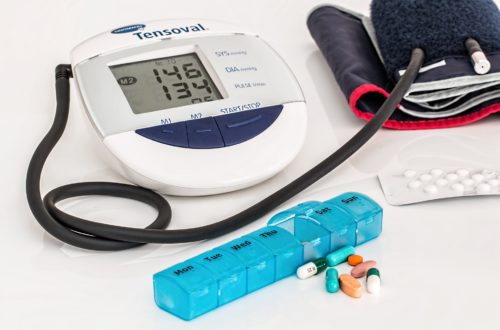
Chest Pain
Intravenous Fluid Orders
- Intravenous Cannula – Insert
- IV Peripheral Saline Flush/Lock: Saline Lock
- IV Maintenance:
- 0.9% NaCl infusion at ______ mL/hour, reassess after hours
- lactated ringers infusion at ______ mL/hour, reassess after hours
- IV Maintenance:
- IV Bolus:
- 0.9% NaCl ______ mL over ______ hour(s)
- lactated ringers _______ mL over _______ hour(s)
Laboratory Investigations
Hematology
- Complete Blood Count (CBC)
- PT INR
Chemistry
- Troponin
- Repeat Troponin_________time(s) (specify collection time below)
- ___________:_____________
- ___________:_____________
- Electrolytes (Na, K, Cl, CO2)
- Glucose
- Creatinine
- Urea
- Serum bHCG
Urine Tests
- Urine Dipstick Testing – POCT
- Urinalysis
- Pregnancy Test, Urine (POCT if available)
Other Labs (based on presentation needs of the patient)
Diagnostic Imaging
Chest x-ray usually indicated unless recently performed to rule out pneumonia, CHF, pneumothorax, etc.
- Chest X-Ray 2 projections (GR Chest PA and Lateral)
- Chest X-Ray 1 projection: Portable (GR Chest Portable)
- CT Chest Enhanced
Other Investigations
- Electrocardiogram
- 15 Lead (if signs of inferior ischemia or anterior ST depression)
- 12 Lead every minutes, times (if ongoing symptoms suggestive of cardiac ischemia)
- 12 Lead PRN for recurrent episodes of chest pain
Medications
Antiplatelet Agents
Should be administered to all patients at high risk of Acute Coronary Syndrome (ACS) as soon as practical after ED arrival if not taken by patient or administered by EMS prior to arrival. It is reasonable to delay acetylsalicylic acid (ASA) administration in low-risk patients or until an ACS diagnosis has been confirmed.
- acetylsalicylic acid CHEW tab (ASA) 160 mg PO STAT x 1 dose UNLESS already administered during current presentation followed by ASA enteric coated 81 mg PO daily
If true allergy to ASA or confirmed ACS
Choose ONE only
- ticagrelor 180 mg PO once (preferred agent for patients undergoing Percutaneous Coronary Intervention [PCI])
- clopidogrel (specify dosage):
- 300 mg PO once
- 600 mg PO once
Nitrates
- nitroglycerin SL spray (each spray delivers 0.4 mg nitroglycerin) 1 spray sublingually every 5 minutes PRN up to 5 doses; Notify authorized prescriber if persistent symptoms after 3 doses; HOLD if SBP less than 100 mmHg
If sublingual nitroglycerin ineffective and high probability of cardiac chest pain consider nitroglycerin infusion. Avoid nitroglycerin infusion in patients with systolic blood pressure less than 100, in MI with inferior/right-sided involvement or recent use of phosphodiesterase inhibitors (sildenafil or tadalafil within 24 hours).
- nitroglycerin infusion (non-weight based)
- Start at 5 microgram/min IV continuous; increase by 5 to10 microgram/min q3 to 5 minutes as needed up to 20 micrograms/min; then by 10 to 20 microgram/min q3 to 5 minutes, as needed, to a maximum of 200 microgram/min
- nitroglycerin infusion (weight based)
- Start at 0.1 to 0.2 microgram/kg/min IV continuous; increase by 0.1 microgram/kg/min q3 to 5 minutes as needed up to 0.3 microgram/kg/min; then by 0.2 to 0.4 microgram/kg/min q3 to 5 minutes, as needed, to a maximum of 200 microgram/min
Opiate Analgesia
Consider opiate analgesia if persistent symptoms of ischemic chest pain despite maximal anti-ischemic therapy. For “susceptible patients” defined as elderly, frail, low body mass, systemically unwell, or on medications known to cause sedation or lower blood pressure we recommend decreasing narcotic dosing by 50%.
- Notify physician or nurse practitioner for reassessment if pain not controlled after administration of maximum dosage.
- HYDROmorphone 1 mg IV once
- HYDROmorphone 0.5 to 1 mg every 10 minutes PRN for pain (maximum 3 mg total)
- HYDROmorphone _ mg IV every minutes PRN for pain
Suggest 0.5 mg for moderate pain and 1 mg for severe pain
- fentaNYL 50 micrograms IV once
- fentaNYL 25 to 50 micrograms IV every 5 minutes PRN for pain (maximum 200 micrograms total) o fentaNYL mcg IV every minutes PRN for pain
Suggest 25 mcg for moderate pain and 50 mcg for severe pain
- morphine 2.5 to 5 mg IV q15min PRN (maximum of 20 mg before speaking to physician)
Antiemetics
Avoid dimenhyDRINATE in patients 65 years of age or older due to increased risk of side effects including delirium. Suggest 25 mg for mild/moderate nausea, 50 mg for moderate/severe nausea.
- dimenhyDRINATE 50 mg PO once
- dimenhyDRINATE 25 to 50 mg PO every 4 hours PRN for nausea/vomiting
- dimenhyDRINATE mg PO every hours PRN for nausea/vomiting
- dimenhyDRINATE 50 mg IV once
- dimenhyDRINATE 25 to 50 mg IV every 4 hours PRN for nausea/vomiting
- dimenhyDRINATE mg IV every hours PRN for nausea/vomiting
Oral administration or slow infusion via IVPB are preferred for metoclopramide to reduce the risk of akathisia. Suggest 5 mg for mild/moderate nausea or if CrCl less than 40 mL/min; 10 mg for moderate/severe nausea, and CrCl over 40 mL/min
- metoclopramide 10 mg PO once
- metoclopramide 5 to 10 mg PO every 6 hours PRN for nausea/vomiting
- metoclopramide mg PO every hours PRN for nausea/vomiting
- metoclopramide 10 mg IVPB once
- metoclopramide 5 to 10 mg IVPB every 6 hours PRN for nausea/vomiting
- metoclopramide mg IVPB every hours PRN for nausea/vomiting
4 mg starting dose recommended for IV ondansetron. Avoid ondansetron in patients with prolonged QTc interval.
- ondansetron 4 mg IV once
- ondansetron 4 mg IV every 8 hours PRN for nausea/vomiting
- ondansetron mg IV every hours PRN for nausea/vomiting
- ondansetron tab 8 mg PO every 8 hours PRN for nausea/vomiting
- ondansetron tab mg PO every hours PRN for nausea/vomiting
Due to high cost, recommend reserving ondansetron DISINTEGRATING tab for actively vomiting patients without an IV
- ondansetron DISINTEGRATING tab 8 mg PO every 8 hours PRN for nausea/vomiting
- ondansetron DISINTEGRATING tab mg PO every ___ hours PRN for nausea/vomiting
Patient Care
Monitoring
- Vital Signs (respiratory rate, pulse, blood pressure, temperature, oxygen saturation)
- as per provincial guideline http://insite.albertahealthservices.ca/assets/policy/clp-ed-assess-reassess-pts-guideline-hcs-181-01.pdf
- o every hour(s) o manual o automatic
- o every minutes o manual o automatic
Patients with unstable hemodynamics or ongoing symptoms consistent with cardiac chest pain should have continuous cardiac and pulse oximetry monitoring. Patients with atypical chest pain may not need monitoring. Patients who are symptom-free do not require continuous cardiorespiratory monitoring.
- Bedside Cardiac Monitoring
- Oxygen Saturation Monitoring – Continuous
Respiratory Care
If oxygen saturation is already adequate (GREATER than 90%), no supplemental oxygen is required.
- O2 Therapy – Titrate to maintain SpO2 greater than or equal to 90%
- Notify physician if O2 flow required to be increased by greater than 2 L to maintain the same level of oxygenation, if there is a progressive increase in work of breathing, hypotension, or decreased or altered level of consciousness (LOC).
Diet / Nutrition
- NPO
- NPO: May Take Meds
- Regular Diet
- Other Diet:
Other Orders
- Consult Cardiology
- Consider accessing the HEART Score to assist with risk stratification during the consultation process: http://www.mdcalc.com/heart-score-for-major-cardiac-events/
Reference: https://www.albertahealthservices.ca/frm-20746-bond.pdf



